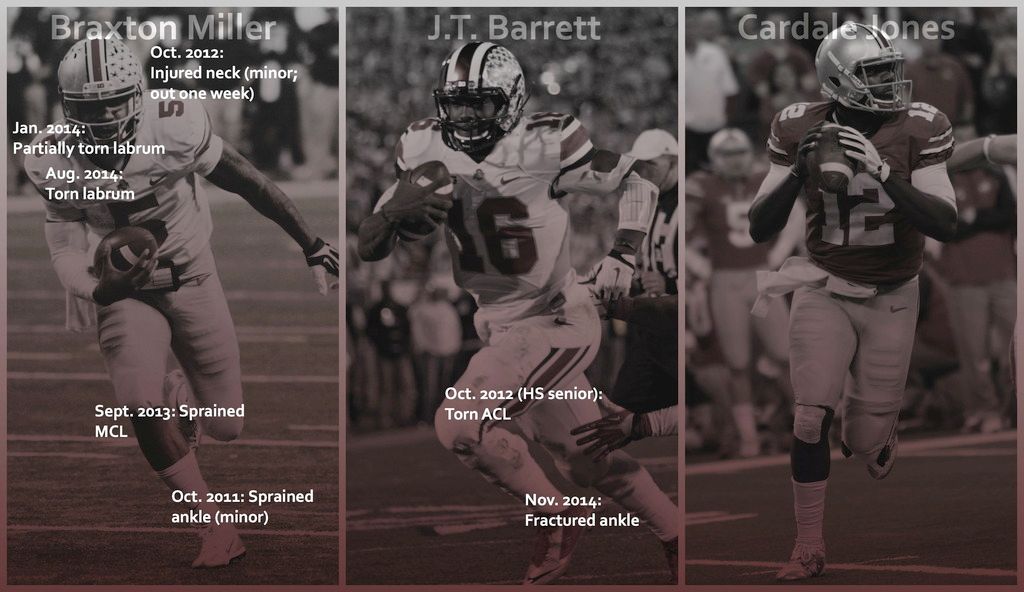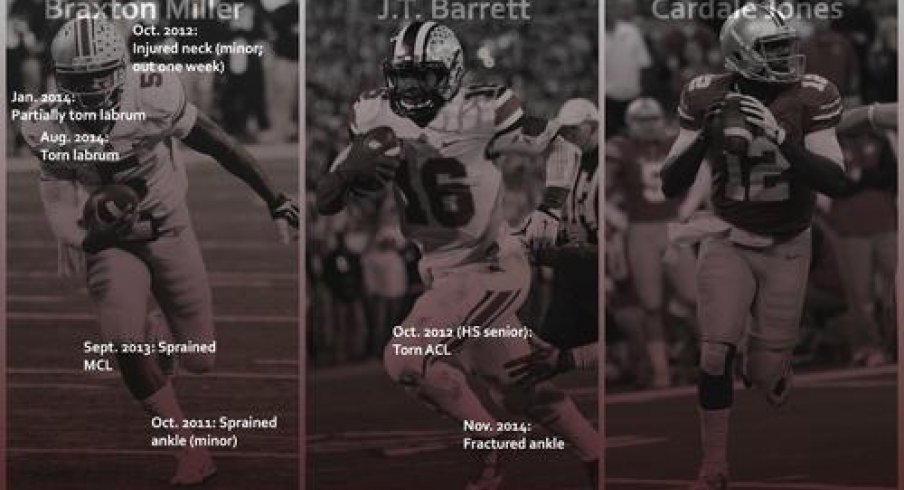Buckeye Nation is privileged. The biggest concern heading into the upcoming season is deciding which quarterback to start.
This is probably what Jay Z feels like every morning when he has to decide whether to drive the Maybach, the McLaren, or the Bugatti. Innie minnie miny moe, people are starving in Africa.
No choice is the wrong choice. No matter what, you're winning.
Regardless, the QB battle conversation is a fun one to have, and it keeps us engaged in the off-season. The final decision will, of course, be multi-factorial, but one key consideration is the injury history of the three respective contenders.
Here is a pictorial representation of the musculoskeletal ailments (or lack thereof) which have played a role in the careers of Braxton Miller, J.T. Barrett, and Cardale Jones:

In looking at this image, it's clear Miller has had the highest injury burden, as minor as some of the issues were.
It's also important to note both of Barrett's injuries have been big ones that required long rehabilitation periods. Unfortunately, too, ACL tears can be associated with long-term complications like chronic instability, osteoarthritis, cartilage degeneration, and pain.
Lastly, as easy as it is to get excited over Jones' blank canvas, it should be titrated to account for his less playing time in games at the NCAA Division I level. Injury rates are significantly higher in games than in practice.
With these considerations in mind, the ideal situation is Ohio State enters the upcoming season with all three of these stars having no restrictions. That would be the best possible scenario for the fans, but more importantly, for the well-being of the athletes themselves.
Fortunately, the depth of talent on the Buckeye roster allows each quarterback to have ample recovery time while the others seamlessly fill in the gap. It's clear there is no looming shortage of aptitude in the QB position (or any other position), and for that, we are happily spoiled.
References:
- Hootman, Jennifer M., Randall Dick, and Julie Agel. "Epidemiology of collegiate injuries for 15 sports: summary and recommendations for injury prevention initiatives." Journal of athletic training 42.2 (2007): 311.
- Lohmander, L. Stefan, et al. "The long-term consequence of anterior cruciate ligament and meniscus injuries osteoarthritis." The American journal of sports medicine 35.10 (2007): 1756-1769.
- Struewer, Johannes, et al. "Knee function and prevalence of osteoarthritis after isolated anterior cruciate ligament reconstruction using bone-patellar tendon-bone graft: long-term follow-up." International orthopaedics 36.1 (2012): 171-177.


